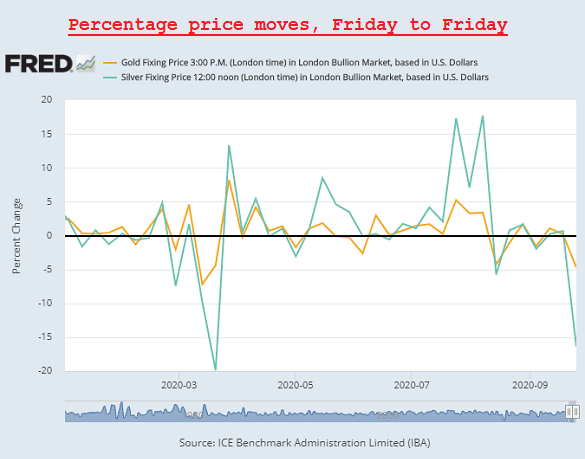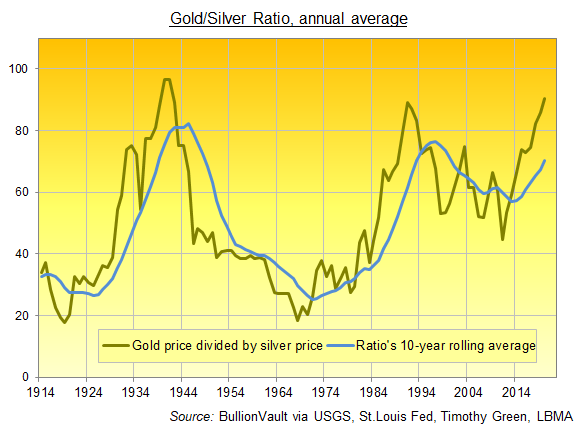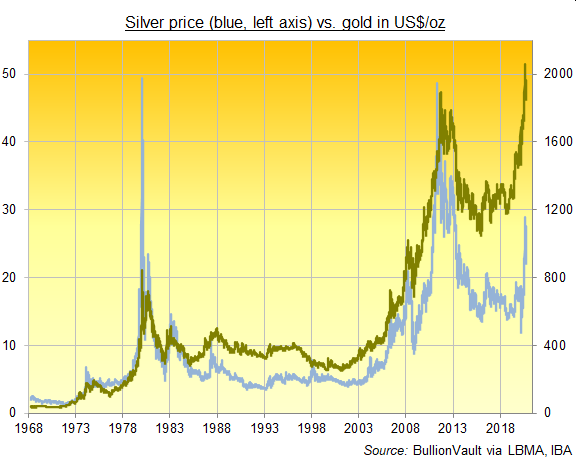The Devil's Metal? 5 Key Points for Investing in Silver

#1. Silver supply and demand
#2. The Gold/Silver Ratio

#3. Silver volatility 80% greater than gold's
#4. 2020 Bull Market in Context

#5. How to buy investment silver
- In US Dollar terms, wholesale silver (aka 'spot') has risen 35% so far in 2020. But buying silver Eagles at New Year to sell today would net only 25% for a US resident.
- Euro investors face sales tax on top, and even with Germany cutting its MwSt sales tax from 19% to 16% at present (to try and boost consumer spending), the wide dealing spreads on retail-investment silver products means you would need prices to rise 22% or more just to get back to breakeven after purchasing a 500g, 1 kilo or even 15kg bullion bar today.
- Things get worse still for a UK resident. Since mid-2019, the wholesale spot price today shows a 58% gain today. But if you'd bought £5,000 of silver Britannia coins last June, then on your outlay of £18 per coin, you would make only 92 pence – a mere 5% profit – thanks to the 20% VAT you had to pay on top of the dealer's mark-up, plus the discount you suffer now you want to sell.









 Email us
Email us